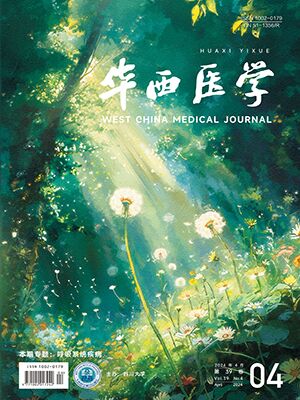【摘要】 目的 分析异基因造血干细胞移植术(allogeneic hematopoietic stem cell transplantation,allo-HSCT)后出血性膀胱炎(hemorrhagic cystitis,HC)相关的危险因素,动态监测受者尿BK病毒(BK virus,BKV),分析其与HC发病的关系。 方法 回顾性分析2003年3月-2008年1月期间接受allo-HSCT的121例患者的资料,选择8个临床参数[年龄、性别、疾病类型、移植时疾病状态、供者类型、预处理方案、急性移植物抗宿主病(acute graft-versus-host disease,aGVHD)、aGVHD的预防方案]作COX回归分析。采用SYBR Green染料实时荧光定量聚合酶链反应法对2006年9月-2008年1月42例allo-HSCT患者尿BKV载量进行动态监测,分析被检查者尿液BKV基因载量与HC发生以及严重程度的关系。 结果 121例患者中有24例发生HC,发病时间为术后0~63 d,中位时间40 d;持续时间7~150 d,中位时间22 d。Ⅱ~Ⅳ度aGVHD为HC的独立危险因素[RR=8.304,95%CI(1.223,56.396),P=0.030]。allo-HSCT受者尿液中BKV检出率为100%(42/42)。与正常人及未发生HC的allo-HSCT受者相比,HC患者尿中BKV基因载量具有更高平均峰值。 结论 Ⅱ~Ⅳ度aGVHD,尿中BKV DNA高载量与HC的发生有相关性。
【Abstract】 Objective To identify the risk factors for hemorrhagic cystitis (HC) after allogeneic hematopoietic stem cell transplantation (allo-HSCT), and define the quantitative relationship between BK virus (BKV) DNA load with HC. Methods The medical records of 121 patients undergoing allo-HSCT from March 2003 to January 2008 were retrospectively analyzed. Eight clinical parameters were selected for COX regression analysis, including age, sex, underlying disease, disease status at transplant, donor type, conditioning regimen, acute graft-versus-host disease (aGVHD), and GVHD prophylaxis. From September 2006 to January 2008, mid-stream urine samples were continuously collected from 42 patients with allo-HSCT. SYBR green real-time polymerase chain reaction, technique was utilized to define the quantitative relationship between BKV DNA load and HC. Results Twenty-four out of 121 patients developed HC. The median time of onset was 40 days after HSCT, ranged from 0 to 63 days. The disease lasted for 7 to 150 days, with a median duration of 22 days. Grade Ⅱ-Ⅳ aGVHD [RR=8.304, 95% CI (1.223,56.396); P=0.030] was identified as an independent risk factor for the occurrence of HC. BKV excretion was detected in 100% (42/42) of the recipients of allo-HSCT. When compared with asymptomatic patients and allo-HSCT recipients without HC, patients with HC had a significantly higher mean peak BKV DNA load. Conclusions Patients are at an increased risk of developing HC if they have grade Ⅱ-Ⅳ aGVHD. A correlation between the load of BKV and incidence of HC may exist.
Citation: CHEN Xinchuan,LIU Ting,MENG Wentong,JIA Yongqian,LI Jianjun,HE Chuan,HUANG Jie. Analysis of Risk Factors for Development of Hemorrhagic Cystitis in Recipients of Allogeneic Hematopoietic Stem Cell Transplantation. West China Medical Journal, 2011, 26(12): 1767-1773. doi: Copy




